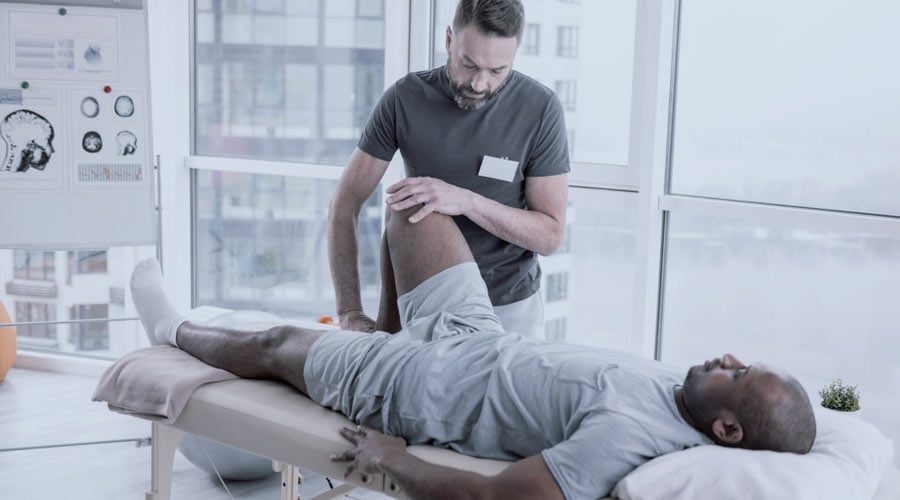Rehabilitation after surgeries in Türkiye
Rehabilitation after surgeries is enough to provide the patient with what is necessary in order for him to be discharged after undergoing the operation as any person who works normally.
However, he must abide by the instructions given by the therapist to avoid the occurrence of any complications, the degree of which varies according to the type and importance of the operation.
The importance of rehabilitation after surgeries

Surgical operations have become a routine matter, as modern technologies in medicine have made it easy to perform them in a short time and without hardship.
Also, the problem is no longer that it is difficult to perform operations. But the most difficult are the stages that follow, which make it difficult for the patient to return to his previous position. For these reasons, attention has been paid to the use of modern medicine techniques and the preparation of treatment programs and plans that are prepared and organized specifically for rehabilitation after operations.
This is what made REHABTÜRK distinguished by providing what is necessary for the patient in this regard. As it provides programs that are not limited to the physical aspects only. Rather, it extends to include the psychological aspects as well that make the patient in a state of isolation and his lack of good communication with those around him.
Types of surgeries that require rehabilitation programs after operations
The types of surgeries that need to be undergone for rehabilitation vary. The hospital seeks to provide all the necessary services for post-surgical operations of all kinds, which include:
- Surgeries related to the amputation of a limb and need a treatment plan and rehabilitation programs before and after the operation. As the patient who undergoes such operations, programs are prepared for him. It includes exercises that he needs after the surgery. These actions help him get what gives him the necessary strength and strengthening of the muscular system. The exercises that qualify the patient for amputation, if it is going to be done on one foot, include training him on how to move from his bed to the wheelchair initially. The exercises that the patient performs before the operation prepare him psychologically and physically for the post-operative period.
- The installation of artificial joints , which some need. These programs help the patient get better results after the operation. It works to strengthen and prepare the muscles and enhance their work in the lower and upper extremities.
- Rehabilitation after undergoing hip implants , such as providing instructions to be followed by the patient after the operation. Avoid placing the legs cross-legged and angles at which the knees can be bent in their orbit. And training on how to do daily activities such as driving a car, walking, determining the weight that the joint can bear and increasing it gradually, according to what is recommended by the doctor or physiotherapist.
Gradually begin to train the patient to walk using crutches. Then dispensing with them and relying entirely on his own ability and reaching what makes him able to move without the need for help from anyone or using any means.
Guidelines for post-operative rehabilitation
The success of the operation and satisfactory results does not only include the success of the operation by the attending physician or anesthesiologist. However, care must be taken to obtain the best results that help the patient return to his normal life and work.
The most important things that the hospital provides to the patient who undergoes rehabilitation programs after operations are:
- After surgery, such as joint implants, the patient must follow the instructions of the therapist. which were included in the exercises that he carried out, which begin with teaching and training him on how to use the new joint in movement.
It also includes an assistive device at the beginning to help him walk. Then use crutches, then use one crutch, then remove any walking aids.
It also includes driving training. Which the patient is often able to drive after about three months of undergoing rehabilitation programs after operations. The program also includes training in descending and ascending stairs, where the use of healthy feet in ascending is taken into account, while the foot that underwent the operation is used in descending. - Rehabilitation programs include toilet training. And the sitting should be of a height that makes the patient not have to bend his knee more than an angle determined for the patient. Also, training in taking a shower, how to stand and sit, and not resorting to sleeping inside the bathtub are important guidelines so that the new joint will not be exposed to any damage.
- The hospital uses occupational therapy programs to help the patient return to work. While ensuring that the workplace has some utilities to help adapt to the current situation. Preparing the office to help him carry out his work without heavy burdens on him, especially if his work requires carrying heavy weights.
- Includes post-operative instructions for the patient. And undergoing rehabilitation programs after operations, be careful if he is exposed to something in his teeth, for example. To inform the doctor that he has previously undergone surgeries such as joint implants, in order to take into account when giving him any medications that they do not cause any complications that affect the success of the operation.
Rehabilitation after operations for athletes
Athletes are constantly subject to surgeries that are performed to repair tissue damage, repair the cruciate ligament, treat ligament tears, or others.
These injuries need follow-up or rehabilitation after the operation so that he can return to the stadiums and return to his work normally and without hardship or exposure to more serious injuries or complications.
